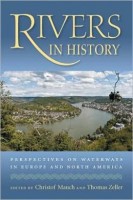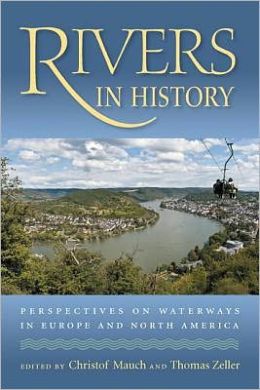 Editors: Christof Mauch and Thomas Zeller
Editors: Christof Mauch and Thomas Zeller
Publisher: Pittsburgh Press – 229 pages
Book Review by: Deekay Daulat
Rivers have had much more impact on the course of human history than one typically imagines.
Since water is essential to life, the presence of rivers has influenced humans on where to build their homes and places of work, and over the course of time, develop entire villages, towns and cities.
Humans have come to live near rivers, and have grown in numbers because of rivers. Cities have risen because of rivers, and they have fallen when there has been drought or flooding, the authors of the articles in this book point out.
Since the earliest times up to the present, the presence of rivers nearby has enabled us to cultivate land and grow food. Rivers, over time, also became modes of transportation and commerce. People living in cities near rivers have therefore prospered.
Besides being sources of water and modes of transportation, rivers in some regions of the world were or are boundaries between countries.
Rivers have influenced us in many different ways, including but not limited to the cultural, ecological, industrial, political, and social aspects of our lives.
In this book, a dozen writers including the editors describe, in 10 chapters, rivers in different parts of Europe and the United States, and how each of them has had a particular kind of impact on us.
The rivers mentioned and discussed in this book are:
- The Euphrates, Nile and Ganges – along which ancient civilizations flourished
- The Rhine, Danube, Oder and Fistula – rivers in German-speaking Europe
- The Seine, a Parisian river that became a national waterway
- Pittsburgh’s three rivers: the Allegheny, the Monongahela and the Ohio
- The cultural and hydrological development of the Mississippi and Volga Rivers
- The hydrosystem of the Upper Rhone and Isere River valleys
- The various rivers in England’s Yorkshire region and the Ruhr region in Germany
- The Wisconsin Dells river network
An extensive Notes section of 50 pages specifies the sources of the materials the authors used. This is very useful for those who want to research further on the subject.
The book contains photographs and sketches of the various river systems in the U.S. and Europe, which are very helpful in looking at the size and complexity of the waterways and surrounding areas.
Christof Mauch is professor of North American cultural, political and social history and translantic relations in Amerika-Institut, Ludwig-Maximilians-Universitat in Munich, Germany. He is a former director of the German Historical Institute in Washington, DC.
Thomas Zeller is associate professor of history at the University of Maryland. He is the author of Driving Germany: The Landscape of the German Autobahn, 1930-1970.
The editors – Mauch and Zeller – have put together a fairly representative grouping of river systems in the United States and in Europe, and a capable team of experts to write on them.







